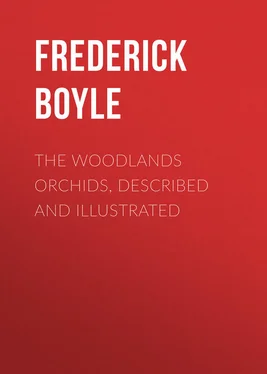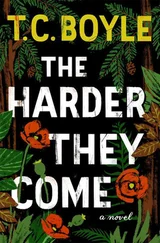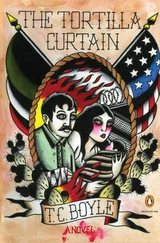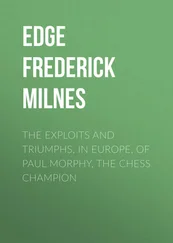Frederick Boyle - The Woodlands Orchids, Described and Illustrated
Здесь есть возможность читать онлайн «Frederick Boyle - The Woodlands Orchids, Described and Illustrated» — ознакомительный отрывок электронной книги совершенно бесплатно, а после прочтения отрывка купить полную версию. В некоторых случаях можно слушать аудио, скачать через торрент в формате fb2 и присутствует краткое содержание. ISBN: , Жанр: foreign_antique, foreign_prose, на английском языке. Описание произведения, (предисловие) а так же отзывы посетителей доступны на портале библиотеки ЛибКат.
- Название:The Woodlands Orchids, Described and Illustrated
- Автор:
- Жанр:
- Год:неизвестен
- ISBN:http://www.gutenberg.org/ebooks/32205
- Рейтинг книги:5 / 5. Голосов: 1
-
Избранное:Добавить в избранное
- Отзывы:
-
Ваша оценка:
- 100
- 1
- 2
- 3
- 4
- 5
The Woodlands Orchids, Described and Illustrated: краткое содержание, описание и аннотация
Предлагаем к чтению аннотацию, описание, краткое содержание или предисловие (зависит от того, что написал сам автор книги «The Woodlands Orchids, Described and Illustrated»). Если вы не нашли необходимую информацию о книге — напишите в комментариях, мы постараемся отыскать её.
The Woodlands Orchids, Described and Illustrated — читать онлайн ознакомительный отрывок
Ниже представлен текст книги, разбитый по страницам. Система сохранения места последней прочитанной страницы, позволяет с удобством читать онлайн бесплатно книгу «The Woodlands Orchids, Described and Illustrated», без необходимости каждый раз заново искать на чём Вы остановились. Поставьте закладку, и сможете в любой момент перейти на страницу, на которой закончили чтение.
Интервал:
Закладка:
Perhaps it would be logical to describe the arrangement of our treasures. But an account which might be useful would demand much space, and it could interest very few readers. It may suffice, therefore, to note that there are thirty-one ‘houses,’ distributed in nine groups, or detached buildings. All through, the health and happiness of the plants are consulted in the first place, the convenience of visitors in the second, and show not at all; which is to say that the roofs are low, and the paths allow two persons to walk abreast in comfort but no more.
The charge of these thirty-one houses is committed to Mr. J. Coles, with thirteen subordinates regularly employed. Mr. Coles was bred if not born among orchids, when his father had charge of the late Mr. Smee’s admirable garden, at Wallington. After rising to the post of Foreman there, he entered the service of Captain Terry, Peterborough House, Fulham, as Foreman of the orchid houses; but two years afterwards this fine collection was dispersed, at Captain Terry’s death. Then Mr. Coles went to enlarge his experience in Messrs. Sander’s vast establishment at St. Albans. In due time the office of Orchid and Principal Foreman in the Duke of Marlborough’s houses was offered to him, and at Blenheim he remained eight years. Thence he proceeded to the Woodlands.
THE CATTLEYA HOUSE
Our Cattleya House is 187 feet long, 24 feet wide; glass screens divide it into seven compartments. The roof, of a single span, is 11 feet high in the centre, 4 feet at the sides.
The compartment we enter first is devoted to Laelia elegans mostly. On the big block of tufa in front, blooms of Cattleya and Laelia are displayed nearly all the year in small tubes among the ferns and moss; for we do not exhaust our plants by leaving the flowers on them when fully open. Scarlet Anthuriums crown the block, and among these, on the bare stone, is a Laelia purpurata, growing strongly, worth observation. For this plant was deadly sick last year, beyond hope of recovery; as an experiment Mr. Coles set it on the tufa, wired down, and forthwith it began to pick up strength. But in fact the species loves to fix itself on limestone when at home in Santa Catarina, as does L. elegans.
It may be desirable to point out that the difference between Cattleyas and Laelias as genera is purely ‘botanical’ – serious enough in that point of view, but imperceptible to the eye.
A special glory of Woodlands is the collection of L. elegans. In this house, where only the large plants are stored, we count five hundred; seven hundred more are scattered up and down. Nowhere in the world can be seen so many examples of this exquisite variety – certainly not in its birthplace, for there it is very nearly exterminated. In such a multitude, rare developments of form and colour must needs abound, for no orchid is so variable. In fact, elegans is merely a title of convenience, with no scientific value. It dwells – soon we must say it dwelt – in the closest association with Laelia purpurata, Cattleya intermedia, and Cattleya guttata Leopoldii; by the intermingling of these three it was assuredly created. Mr. Rolfe has satisfied himself that the strain of Laelia purpurata is always present. By alliance with Catt. Leopoldii the dark forms were produced; by alliance with Catt. intermedia the white. Since that misty era, of course, cross-fertilisation has continued without ceasing, and the combinations are endless.
Evidently this suggestion is reasonable, but if an unscientific person may venture to say so, it does not appear to be sufficient. Among six flowers of L. elegans five will have sepals and petals more or less rosy, perhaps only a shade, perhaps a tint so deep that it approaches crimson, like Blenheimensis or Turneri. Could one of the three parents named supply this colour? Two of them, indeed, are often rosy; in some rare instances the hue of L. purpurata may be classed as deep rose. But these are such notable exceptions that they would rather suggest a fourth parent, a red Cattleya or Laelia, which has affected not elegans alone but purpurata and intermedia also. Nothing of the sort exists now, I believe, in the island of Santa Catarina. But we are contemplating aeons of time, and changes innumerable may have occurred. The mainland is but a few miles away; once Santa Catarina was attached to it. And there, a short distance to the north, lives Laelia pumila, which might supply the rosy tinge.
Several artificial hybrids of Catt. guttata Leopoldii have been raised. By alliance with Catt. Dowiana it produces Catt. Chamberlainiana; with Catt. superba, Feuillata; with Catt. Hardyana, Fowlerii; with Catt. Loddigesii, Gandii; with Catt. Mendelii, Harrisii; with Laelio-Cattleya Marion, C. H. Harrington; with Catt. quadricolor, Mitchelii; with Catt. Warcewiczii, Atalanta. Catt. Victoria Regina also is assumed to be a natural hybrid of Leopoldii with Catt. labiata. There may be other crosses probably, since no official record of Hybridisation exists as yet. Curiously enough, however, no one seems to have mated Cattleya Leopoldii with Lælia purpurata so far as I can learn. Thus it is not yet proved that L. elegans sprang from that alliance.
But the hybridisers have an opening here not less profitable than interesting. For the natural supply is exhausted – if any stickler for accuracy object that some still arrive every year, they may overhaul their Boswell and make a note. Sir, said his hero, if I declare that there is no fruit in an orchard, I am not to be charged with speaking falsely because a man, examining every tree, finds two apples and three pears – I have not the book at hand to quote the very words. When L. elegans was discovered, in 1847, it must have been plentiful in its native home beyond all other species on record. The first collectors so described it. But that home was a very small island, where it clung to the rocks. Every plant within reach has long since been cleared away; those remaining dwell in perilous places on the cliffs. To gather them a man must be let down from above, or he must risk his life in climbing from below. But under these conditions the process of extermination still proceeds, and in a time to be counted by months it will be complete.
In describing a few of the most precious varieties at Woodlands, I may group them in a manner to display by contrast the striking diversities which an orchid may assume while retaining the essential points that distinguish it from others. One form, however, I must mention here, for it is too common to be classed among peculiarities, yet to my mind its colouring is the softest and most dainty of all. Petal and sepal are ‘stone-colour,’ warmed, one cannot say even tinged, with crimson. Nature has no hue more delicate or sweeter.
Adonis. – Bright rosy petals – sepals paler – lip and edges of lobes carmine.
F. Sander. – The latest pseudo-bulb measures 2 feet 3 inches – topping the best growth of its native forest by six inches; from base to top of the spike, 4 feet less 1 inch, and as thick as a walking-cane. This grand plant has been in cultivation for three years. The sepals and petals are those of L. e. Turneri; the lip resembles a fine L. purpurata.
The plant next to this, unnamed, has pseudo-bulbs almost as long, but scarcely thicker than straws.
Empress. – A very dark form of Turneri.
Medusa. – Tall, slender pseudo-bulbs – very dark.
Neptune , on the contrary, has pseudo-bulbs short and fat, whilst the colouring is pale.
H. E. Moojen. – Doubtless a natural hybrid with L. purpurata, which takes equally after both parents.
Godseffiana. – Nearly white; the broad lip carmine – lobes of the same hue, widely expanded.
Mrs. F. Sander. – A round flower, very dark rose; sepals and petals dotted all over, as in Cattleya Leopoldii.
Читать дальшеИнтервал:
Закладка:
Похожие книги на «The Woodlands Orchids, Described and Illustrated»
Представляем Вашему вниманию похожие книги на «The Woodlands Orchids, Described and Illustrated» списком для выбора. Мы отобрали схожую по названию и смыслу литературу в надежде предоставить читателям больше вариантов отыскать новые, интересные, ещё непрочитанные произведения.
Обсуждение, отзывы о книге «The Woodlands Orchids, Described and Illustrated» и просто собственные мнения читателей. Оставьте ваши комментарии, напишите, что Вы думаете о произведении, его смысле или главных героях. Укажите что конкретно понравилось, а что нет, и почему Вы так считаете.












